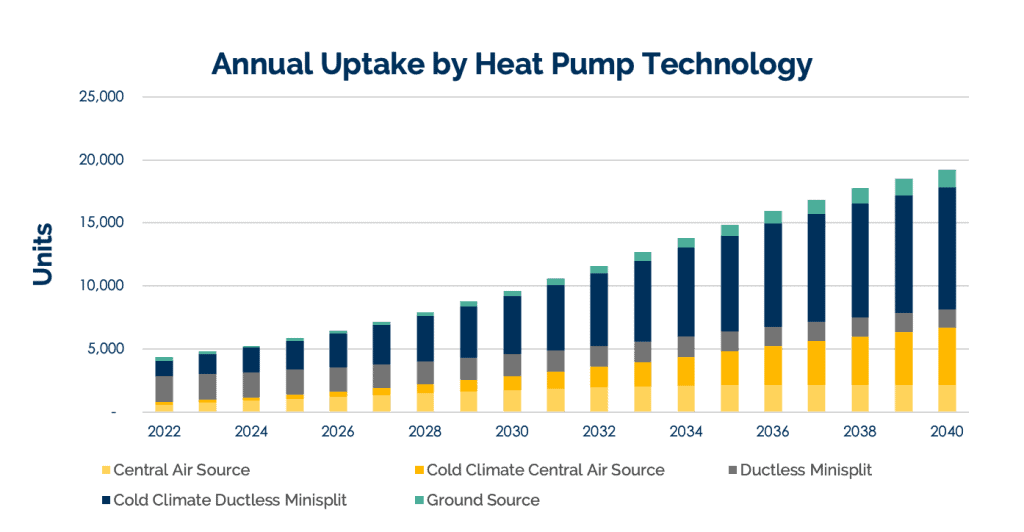Dunsky’s Heating Energy Decarbonization Model (HEAT™) model is designed to help our clients accurately assess the technical, economic, and achievable potential for Heating Electrification strategies and programs in their jurisdictions. Utilities, governments and others leverage the power of HEAT™ to:
- Forecast heat pump uptake, accounting for a given jurisdiction’s specific heating and cooling mix, and allowing for early replacement;
- Obtain highly accurate assessments of heat pump energy and demand impacts by modelling hourly heat pump performance, accounting for the impact of controls, sizing and climate;
- Characterize thousands of different heat pump / end-use combinations, to fully account for the mix of baseline heating and cooling systems present in the jurisdiction, as well as the diverse array of heat pump technologies available for different contexts and needs;
- Identify key markets where conditions are favourable to heat pump adoption, and assess the level of market intervention – whether through policies or programs – necessary to spur adoption where conditions are less favourable;
- Assess the sensitivity of heat pump uptake to key market and technology uncertainties to enable risk-aware decisions; and
- Model energy, demand and carbon impacts under numerous scenarios and sensitivities.
By combining sophisticated, hourly heat pump performance modelling with granular market data and a comprehensive catalogue of technology specs, HEAT™ provides accurate adoption forecasts that are highly specific to the local context. Paired with Dunsky’s in-depth knowledge of electrification options, costs, strategic insights and clear reporting, HEAT™ empowers our clients to make and defend informed decisions about their heating electrification programs, policies and strategies.
Heating electrification, when paired with other clean energy options, is critical to achieving climate and other goals nationwide. We invite you to ask us more about how HEAT™ can provide you with reliable and credible results that can be counted on for planning, regulatory and policymaking purposes.



